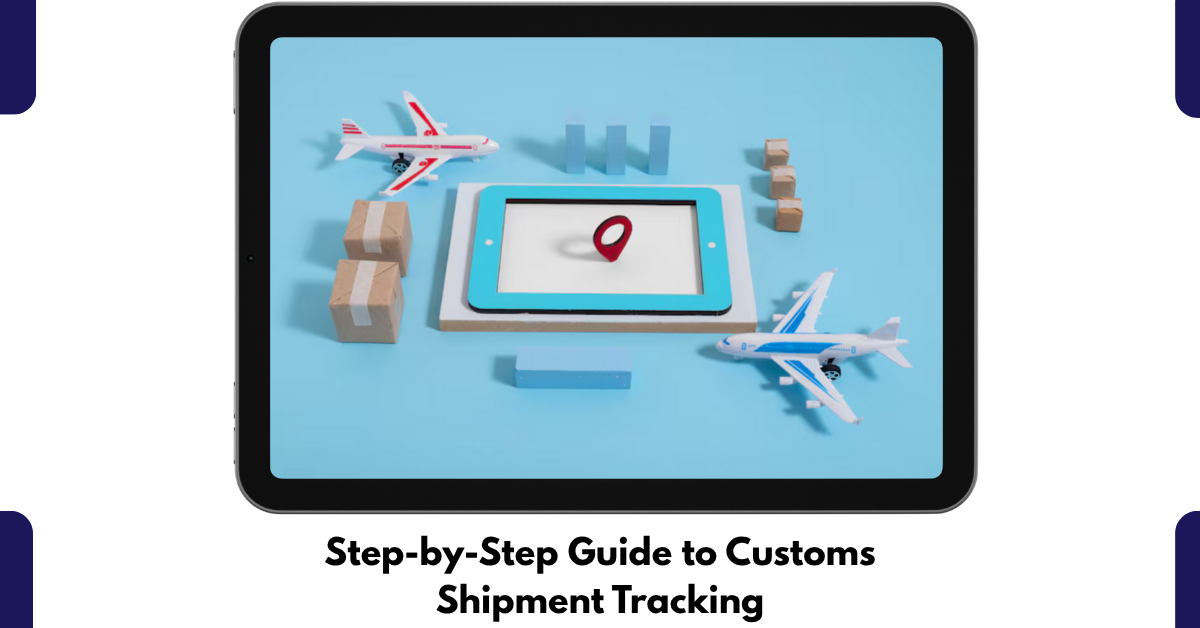Navigating the Complexities of Customs Shipment Tracking
Speed, accuracy, and visibility are crucial to the execution of Global Trade. Every shipment passing through borders is submerged in a sea of customs clearances, endless documents, and a multitude of regulatory checkpoints. Shipments, stagnated due to a lack of communication, can stall business functions making expensive costs rise out of nowhere. This is why understanding the Step by Step Guide to Customs Shipments Step by Step Guide to Customs Shipment Tracking is crucial.
Modern day logistics are not only concerned with the moving of goods. Real time accuracy, predictive abilities, and the documentation of regulatory policies are key elements. Using something like ICEGATE, the digital monitoring of consignments is mandatory. There is only so much room for ambiguity that businesses and individuals have. This is why the understanding of the current state of the consignment has become a necessity.
The Importance of Accurate Customs Tracking
The complexities involved in the international supply chain include exporters, importers, freight forwarders, shipping lines, and different customs authorities. The clearance of cargo could be stalled sluggishly if even one document is lost, or if a declaration is not verified properly. Knowing where each of the items in the supply chain is, ensures:
→ gaps in clearance cycles of each stage are smaller
→ reduction of costs associated with detention and demurrage
→ customs authorities’ regulations are on the low end of the spectrum
→ strained supplier and customer relations improve
As an example, with ICEGATE Tracking a company can follow a shipment and check the status of the ICEGATE Shipping Bill, the ICEGATE Bill of Entry Verifications, and the Bill of Entry customs clearance. Operational risks are high without proper risk planning methodologies or structured tracking systems in place. customs shipment tracking
Step 1 – Understanding ICEGATE and Its Role
The backbone of the customs clearance system in india is ICEGATE. The system digitally links and allows the stakeholders in the import and export business as well as shipping lines and customs officers do work and access files in a single place digitally. customs shipment tracking Customs professionals use ICEGATE login to access realtime shipping documentation, clearance status, and regulatory compliance monitoring.
Among the most relevant features are highlighted below:
→ Custom export documentation using ICEGATE shipping bills.
→ Custom import documentation via ICEGATE Bills of Entry.
→ Automated updates on the status of submitted shipping bills and bills of entry.
→ Customs clearance email alerts.
→ Automated customs duty payment.
These features allow organizations to assess shipment progress without relying on over-the-top manual resources and intermediaries.
Step 2 – Filing and Monitoring Shipping Bills
As part of the export process, every shipment has to be electronically filed using the ICEGATE Shipping Bill. This document is vital for the clearance of customs for any shipment leaving the country. Exporters log into the ICEGATE system to electronically file shipping bills and must provide consignee details and export incentives that are applicable to the shipment. customs shipment tracking
Users can automate the process of tracking the status of files using ICEGATE Tracking, and will be able to determine the different phases of a bill, namely pending review, approved, and partially approved. Continuous tracking and modifying shipment processes allow for effective shipment schedule management.
Step 3 – Filing the Bill of Entry for Imports
Unlike the exports, here the ICEGATE Bill of Entry is a legal document which describes the nature, quantity and estimated valuable of the goods which are being imported. Acceptable import files bill must be submitted discharges 48 hours prior to the arrival of the cargo. customs shipment tracking
After submission, the status of the Bill of Entry can be monitored on the ICEGATE portal. Tracking allows importers to know if duties have been paid, if the goods are under further customs scrutiny, or if clearance has been granted. Using the tracking, importers avoid the risk of unexpected storage charges or the costly detention of their cargo at ports.
Step 4 – Leveraging Container Tracking Systems
In addition to the customs filings, companies still access container visibility through the shipping line systems. For first time customers, COSCO container tracking provides an interface with the system which is designed to offer customers the broadest visibility on vessels, container movements, and arrivals. By integrating ICEGATE Tracking with line-specific systems like COSCO’s, companies attain an all-inclusive interface on customs clearance and the subsequent movement of associated physical cargo.
In this way, having access to both sides of the shipping process enables the company to plan ahead, and arrange all the other transport movements so the entire supply chain is uninterrupted. customs shipment tracking
Step 5 – Using Data to Drive Efficiency
The ability to track shipments is more than a condition for compliance – it is an edge gained through effective use of data. Businesses can analyze patterns among the indices on Shipping Bill status, Bill of Entry status, and container tracking data to:
→ Recognize and address bottlenecks in customs clearance processing
→ Adjust and improve forecasts for deliveries
→ Enhge bargaining positions with logistics providers
→ Streamline Documentation and Regulatory Compliance to improve processing accuracy
The ICEGATE system, through digitization and data centralization, shifts the focus of stakeholders from delay reaction to delay anticipation and elimination. customs shipment tracking
Overcoming Common Challenges in Customs Tracking
Even with robust systems such as ICEGATE Tracking, hurdles are inevitable for all businesses:
→ Outdated and missing submissions on Shipping Bill or Bill of Entry are caused delays due to system outages.
→ Filings having to be refiled are incorrect and cause delays for clearance.
→ Users lack the ability to use ICEGATE to full capacity.
→ Defensive measures include the use of seminars, in-house customs advisors, and digital compliance.
The Value Proposition of Proactive Tracking
Increased customer satisfaction shifts tracking from a cost center to a center of profit. Firms that continue to track and monitor their customs ICEGATE Shipping Bill, ICEGATE Bill of Entry, and COSCO container monitoring spend more time on value adding activities and less on interruptions. As a result, the business increases its stakeholders. Enhanced customer loyalty results from the firm being able to resolve complex logistics issues. customs shipment tracking
The Future of Customs Shipment Tracking
Digitization of global supply chains will bring further evolution to customs tracking. Artificial intelligence, blockchain verification, and predictive analytics are being incorporated into systems like ICEGATE. The future voes
→ Automated updates of Bill of Entry and Shipping Bill status
→ Increased visibility to all global shipping lines
→ Single pane dashboard view for container tracking merged with customs clearance
Reduction of manual processes, improvement of reliability and efficiency of cross border trade are other promises of these advancements.
Why Customs Tracking Cannot Be Ignored
Customs delays can impact entire supply chains and with the ICEGATE login, exporters and importers can track, monitor, and streamline processes like never before. By combining ICEGATE Tracking with shipping line systems, like COSCO container tracking, a complete view of cargo is offered. customs shipment tracking
Companies that adopt active customs shipment tracking systems will enhance their market position, save time, and lower their operational costs. In the modern world, reliability and rapid speed of action are the prime competitive factors, and in that relation, shipment tracking is a vital part of the whole process.
FAQs on Customs Shipment Tracking
Q1. What is customs shipment tracking?
It’s a system that lets businesses monitor their cargo status during customs clearance in international trade.
Q2. Why is customs shipment tracking important?
It helps ensure timely delivery, regulatory compliance, and smooth cross-border trade.
Q3. How can I track a shipment through customs?
By using customs portals, freight forwarder tracking systems, or logistics provider platforms.
Q4. Who uses customs shipment tracking?
Importers, exporters, freight forwarders, customs brokers, and logistics companies.
Q5. Does customs shipment tracking reduce delays?
Yes, by providing early alerts on clearance issues, businesses can resolve problems quickly.



